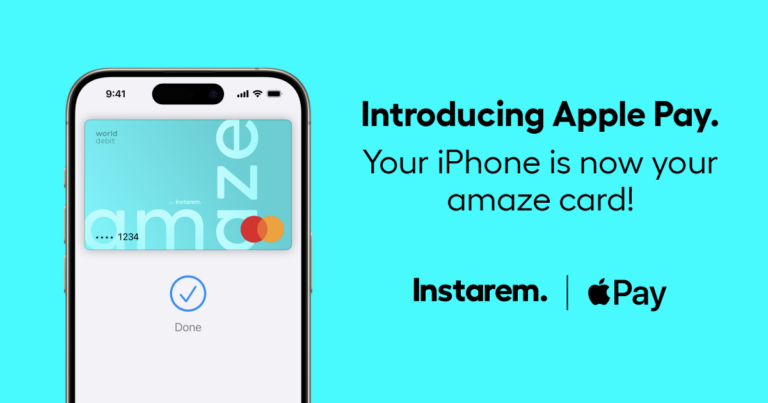10 smart ideas to keep your business debt free

This article covers:
- Do you know how much debt you have?
- Do you have your business priorities straight?
- Is your business generating avoidable costs?
- Can you raise extra revenue by boosting sales or selling some assets?
- Are you proactively following up with late-paying customers?
- Are your vendors open to re-negotiating your payment terms?
- Are your other creditors open to re-negotiating your payment terms?
- Can you raise the prices for your products or services with minimal disruption to your firm?
- Can you consolidate or refinance your business debt?
- Have you considered other avenues for financing & advice?
- Debt is a double-edged sword
- Before you go…
For most businesses – particularly small businesses – around the world, debt is a necessary part of normal operations.
Debt financing may take the form of a Business Line of Credit (LOC), a business credit card or a short/medium-term loan. Assets-based loans (loans against collateral) and microloans also fall under the ambit of debt financing.
You Might Also Like: 10 Dos and Don’ts Of Small Business Finance
Debt is a powerful financing avenue that can help a small business owner:
- Set up the business
- Purchase an existing small business to merge with his firm
- Finance current or future growth
Business owners may also take on debt to:
- Cover cash flow gaps caused by delays in customer receivables
- Maintain equipment or increase inventory to take advantage of a sudden market opportunity
- Meet a sudden or seasonal demand for its product or service
- Repair damaged assets due to an expected natural emergency such as an earthquake
Despite the important role played by debt in making the business world go round, too much debt can also cause problems.
It can stifle a firm’s cash flow and diminish its ability to meet its financial and moral obligations.
A debt-ridden firm is forced to ignore potentially lucrative opportunities that may help it to expand the business or reinvest its earnings to meet its repayment obligations.
Over the long term, continued difficulty in repaying debt can seriously endanger a firm’s financial health and future existence.
Last but not least, debt – or rather an inability to manage it well – can also adversely affect a company’s reputation and goodwill, not only among customers and vendors but also within its industry and country of operations.
If you are a small business owner, read on for 10 smart ideas that can help you make positive progress with your debt. Start by asking yourself these questions:
Do you know how much debt you have?
Many small business owners often overlook the importance of maintaining a proper inventory of debt. Before you can even imagine operating your business in a debt-free utopia, you must find the answers to these questions first:
- What is the total amount of debt on your company’s books?
- What kind of debt instruments have you taken on – loans, credit cards, lines of credit, etc? Have many payments have you made so far and how many are still outstanding?
- Do you have any outstanding payments to vendors or contract employees over and above payments to financial institutions (banks, credit card companies, etc)? Remember that such payments may not be costing you interest, but they also add to your debt burden!
- What are the different interest rates on all your debt instruments?
- What is the repayment structure you and your creditors have agreed to? Are your repayments weekly, fortnightly or monthly? Do have some wiggle room, i.e. are these periods flexible?
- Is your debt-related paperwork in order? Agreements, statements, etc?
Once you know these answers, formulate a plan to repay your outstanding debts.
Knowing your priorities will also help with this task.
A repayment schedule that identifies details such as creditor name, amount of debt, interest rate, period, etc will take the guesswork (and painful uncertainty) out of the process.
Plenty of specialised software applications are available to help with this task but good old Excel works just as well.
Once your plan is in place, start your repayments immediately if possible, so that your firm’s future or its credit score is not adversely affected.
You Might Also Want To Read: 5 effective strategies to cut your overseas business costs
Bottom line:
Make a thorough inventory of all your debt obligations and then create a repayment plan/schedule.
Be organised, systematic and resolute.
Do you have your business priorities straight?
Once you know where you stand debt-wise, you can start compiling your list of priorities so that you know which debts to tackle first.
If possible, start paying off the highest-interest-rate debt. This idea will work best if you have some flexibility on your other debts and won’t be penalised for late repayments on them.
If you have credit card debt, make a healthy dent in your obligation by paying off more than just the minimum.
At the same time, make sure that your current finances allow you to take care of your business’ critical expenses (buying inventory, paying employees, etc) without taking on additional debt.
If possible, take care of overdue bills from important vendors. Deliberately delaying these payments can free up cash flow and help you with your debt repayments, it may also cost you your reputation and good standing.
Prioritise your obligations and use this information to draw up your repayment plan.
Finally, forecast your business’s cash flow for the next few months to a year, ensuring that you have enough money to run your business plus a little extra for emergencies.
Revise your business’ budget accordingly.
If financial forecasting or budgeting is not your area of expertise, specialised business financial planning and debt management firms can help, usually for a fee (but sometimes for free).
Bottom line:
Prioritise your debts and repay them accordingly.
Keep an eye on the near future by preparing a carefully thought-out financial forecast.
Is your business generating avoidable costs?
As mentioned in the introduction, businesses often take on debt to finance their aspirations for growth and expansion.
Sometimes debt financing may not be the most prudent option if it is taken on to finance costs that may initially appear necessary or business-critical but turn out to be anything but.
For example, a business credit card may be used to buy office supplies or rent a larger office space that may not be required.
A medium-term bank loan may be taken to hire more employees that ultimately end up padding the firm’s personnel infrastructure but do little to improve its bottom line.
Or a line of credit – which may look attractive because it offers access to a large pool of capital and/or low-interest rates – may be used to buy more inventory that sits in a warehouse occupying space and costing money without being turned over to earn revenue.
In such cases, small business owners must first identify the unnecessary costs that got them into debt in the first place. Then they must find answers to these questions:
- Which activities, processes or departments are responsible for these costs?
- Can they be eliminated or at least optimised?
- Can you move to a smaller/less expensive office space?
- Can you ditch costly communications systems such as interoffice video-conferencing machines or electronic whiteboards in favour of simpler, less-expensive machines?
- Can you sell off excess inventory or unused equipment that’s taking up warehouse space and costing you in storage fees?
- If it is not possible to entirely eliminate these costs, can they at least be outsourced or offshored?
- Can you split some costs with other companies by sharing employees or other resources (e.g. Internet bandwidth, receptionists, administrative personnel, etc)?
Bottom line:
Carefully analyse your business needs and goals to identify unnecessary costs and eliminate, minimise or optimise them.
Simultaneously, look for ways to increase your revenues.
Can you raise extra revenue by boosting sales or selling some assets?
Businesses can try several tactics to increase their revenue, even in the short- and medium-term.
Consider offering a special limited-time sales promotion for your products or services. You can also offer discounts or coupons to encourage customers to buy more (and thus ultimately spend more).
A well-planned ‘loyalty programme’ can also increase customer acquisition, retention and satisfaction and ultimately yield more revenue.
Review the assets listed on your company’s balance sheet. These represent money that’s tied up in your business which if freed may be used to reduce your debt.
- Can you sell off additional or unused inventory in a special sale or auction to increase your cash flow?
- Do you own a building that you occupy? Can you vacate it, move to a smaller space and lease the building to one or more renters?
In the long term, you can also use customised, well-thought-out digital marketing strategies to boost your sales and increase your revenues, such as affiliate programmes, email newsletters, social media engagement programmes and website promotions.
Bottom line:
Use the revenue-generation strategy in tandem with the cost-cutting strategy to generate more cash and repay your debts.
Are you proactively following up with late-paying customers?
Every business depends on its customers to keep it going and this is true in every industry and across geographies. Late-paying customers, however, are more likely to break a business than make it.
If you operate in an industry where late payments are the norm rather than the exception, there may be very little you can do to change it.
However, if only some of your clients are consistently late with their payments or if you have clients on a long-term payment plan, it may be time to rethink your ‘accounts receivables’ strategy.
Make a list of outstanding invoices – bills you have submitted to customers but have not yet been paid – and contact these customers by phone or in person. Ideally, you should start with the customers who are the most delayed with their payments.
Check if the time has come to revise payment terms for some or all customers:
- Can you shorten the payment period from 60 days to 45 days? 30 days to 15 days?
- For customers who pay on-time or early, can you offer a reward, bonus or discount to keep them motivated to continue such ‘good’ behaviour in future?
- For late-paying customers, can you charge them a late-payment penalty (similar to the way banks penalise you for late credit card payments)?
And an extreme solution for chronically late customers:
- Can you afford to discontinue the business relationship?
- How will it affect your future bottom line?
Remember that cutting ties with some customers should be a last resort solution because by doing so, you risk losing potential revenue and may find yourself even deeper in debt, a situation you are trying to resolve in the first place!
Develop a system to remind customers when their payment is due. Automatic emails or text messages at regular intervals towards the end of the payment period can nudge them in the right direction.
Use this strategy wisely though – too many reminders and you may find yourself devoid of all customers because their annoyance pushed them over to your competitor’s camp!
Bottom line:
Use your negotiation skills to nudge customers to pay you on time.
You might find that adjusting your accounts receivable strategy releases a fair amount of cash that you can then use to service your outstanding debt.
Are your vendors open to re-negotiating your payment terms?
In addition to urging your customers to pay you on time, consider negotiating your payment terms with your vendors (i.e. parties for whom you are the customer).
Check if some or all your vendors or service providers are willing to extend your ‘accounts payable’ contract or make it more flexible:
- Instead of paying immediately on receipt of goods, can you pay a few weeks later?
- Instead of paying after every delivery, can you pay at fixed intervals for multiple deliveries? Say, once a quarter for all deliveries completed in that period?
If you have a good past track record of paying your vendors on time, you will likely have a good working relationship with them which will make it more likely that they’ll agree to a new arrangement in your favour.
Bottom line:
If you can negotiate with your customers to pay you on time, you can also negotiate with your vendors to pay them later. You won’t know unless you ask!
Are your other creditors open to re-negotiating your payment terms?
Sometimes you need more time to repay your debt. Keeping your troubles to yourself while simultaneously trying to find ways to loosen the noose may be counterproductive.
Being upfront with your creditors and asking them for more time to repay the loan or more flexibility in your payment structure may be the best strategy.
If they agree with your request, make sure that you fulfil the new terms. Don’t default and don’t burn any bridges.
Bottom line:
Your success at re-negotiating payment terms is not a foregone conclusion and may not always work.
A discussion like this often depends on several factors such as the type of credit, creditor profile, credit score, amount of debt, your past repayment history, etc.
But again, you won’t know unless you ask!
Can you raise the prices for your products or services with minimal disruption to your firm?
Raising prices can be a dicey strategy and depends on multiple factors including industry type, market conditions, customer profiles and competitor landscape.
If prices are rising across the industry, then you too can raise your prices without affecting your firm’s financial health, reputation or goodwill.
However, if you are raising prices above the industry average, you need to play devil’s advocate by putting yourself in your customer’s shoes and then asking yourself:
- Why should customers buy my product/service if my prices are higher than my competitors’?
- What is the unique selling proposition that differentiates my product from others and thus encourages my customers to still buy from me?
Also, to offset the potential pain (to your customers and possibly even to you) of higher prices, consider a volume discount strategy for large orders or important customers.
In addition, check if you can provide some ‘freebies’ – 24×7 customer support, free installation, extended warranty, etc – that may help you justify the increased prices.
Bottom line:
If done strategically, you can raise prices to increase your cash flow and debt servicing ability without alienating customers or worse, losing them entirely.
Can you consolidate or refinance your business debt?
A debt refinancing or consolidation plan can be a good option for servicing debt more efficiently. Through refinancing or consolidation, you may be able to lower your firm’s monthly payment obligations, especially if your firm has a strong credit score.
With debt consolidation, you can combine multiple high-interest debts into a single loan with lower regular payments.
With debt refinancing, you save money by taking out a lower-interest loan and using it to pay off the original loan.
These options are available for loans as well as credit card debt.
By consolidating or refinancing your debt, you have the advantage of making repayments at a reduced, fixed interest rate. This can help lower your firm’s debt burden and give you some breathing room.
Bottom line:
If you have a good credit score but multiple debt obligations, consider consolidating or refinancing your debt.
In addition to banks, specialised debt management firms can also help with business debt consolidation and refinancing.
But before you approach them, do your research!
Have you considered other avenues for financing & advice?
At first glance, the idea of borrowing from Peter to pay Paul may sound like an unstable Ponzi scheme; but it may work in some situations, especially if Peter is a friendly source.
Friends, relatives and close colleagues may be willing to offer you low- or even zero-interest loans, which can reduce some of this repayment pressure for you, even while you use this money to repay your original loan.
However, this idea should be used only in rare cases and with caution – you don’t want to take advantage of your loved ones’ generosity by defaulting on their loan or by ‘forgetting’ your obligations (financial but also moral) to them.
If you do go down this route, treat it like any other professional loan. Draw up a contract if required and specify the terms, conditions and repayment schedule that you can both live with.
For financing advice, you might seek the help of a professional debt management, credit advisory or counselling firm (some may charge a service fee but some may be free). If your situation is critical and you’re close to bankruptcy, talk to a bankruptcy attorney to discuss your options.
Bottom line:
You don’t have to shoulder your burdens alone.
Don’t be embarrassed or ashamed to talk to people and ask them for advice or money.
Debt is a double-edged sword
Small businesses and modest family-run firms have no cause to consider debt evil or frightening.
A reasonable amount can help a small business finance its growth and expand its operations.
However, a firm that borrows too much but doesn’t earn enough revenue to meet its debt obligations can quickly find its debts spiralling out of control.
Debt can be damaging, especially for small businesses, but it does not have to be permanently crippling or bankruptcy-inducing. If managed smartly and with an eye on the future, debt can be an asset rather than a liability.
Before you go…
Instarem can help you manage money transfers to your overseas staff, freelancers and suppliers across Asia, Europe, North America and Oceania.
When you pay your employees in their local currency using Instarem, you can avoid high conversion costs and gain improved exchange rates, thus avoiding losses due to market and currency volatility.
Sign up with Instarem as a corporate user and you are assured of secure online data access and versatile reporting options.
Instarem stands at the forefront of international money transfer services, facilitating fast and secure transactions for both individuals and businesses. Our platform offers competitive exchange rates for popular currency pairs like USD to INR, SGD to INR, and AUD to INR. If you're looking to send money to India or transfer funds to any of 60+ global destinations, Instarem makes it easy for you. We are dedicated to simplifying cross-border payments, providing cutting-edge technology that support individuals and businesses alike in overcoming traditional fiscal barriers normally associated with banks. As a trusted and regulated brand under the umbrella of the Fintech Unicorn Nium Pte. Ltd., and its international subsidiaries, Instarem is your go-to for reliable global financial exchanges. Learn more about Instarem.

























